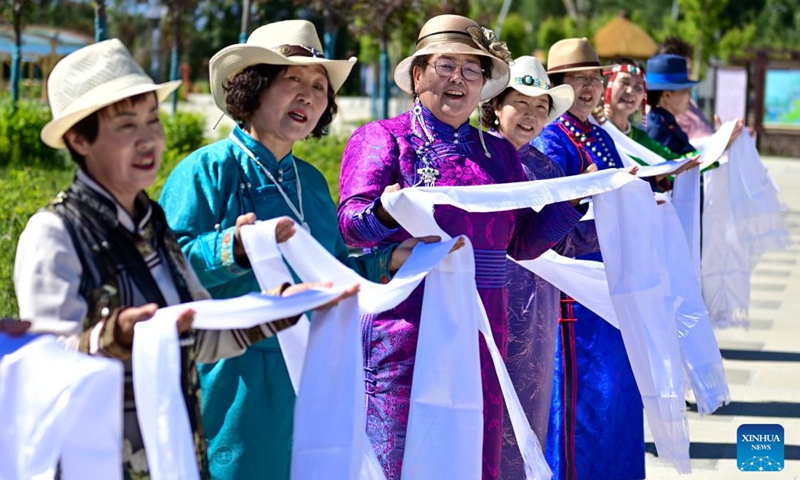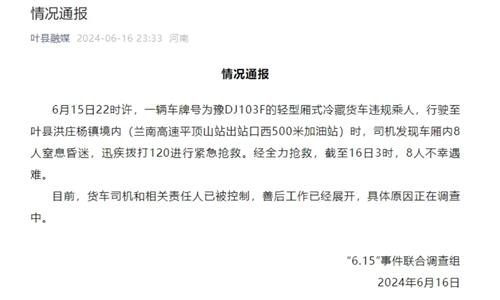
Villagers greet tourists at an agro-tourism area in Emin County, Tacheng Prefecture, northwest China's Xinjiang Uygur Autonomous Region, May 30, 2024. Xinjiang in northwest China has entered its peak tourism season recently. Emin County, located near the China-Kazakhstan border, is a popular tourist destination which provides various rural tour routes and cultural events. (Photo: Xinhua)
As the summer travel peak draws near, flight and hotel room bookings have surged, Chinese travel agencies said, with bookings related to family vacations and college-graduation tours becoming popular.
Domestic bookings for summer travel remain above levels compared with 2023, with people also making their bookings earlier than that in previous years.
Searches for hotels and flights on travel platform Trip.com are up by more than 20 percent year-on-year, with the number of people checking out summer travel options this week 15 percent higher than in the same period of 2019, according to data sent to the Global Times on Thursday.
Bustling travel scenes have already been seen nationwide, Li Changan, a professor from the Academy of China Open Economy Studies at the University of International Business and Economics, told the Global Times, adding that he visited a small hotel in Beijing on Thursday, which was already fully booked.
Family tours have become a highlight for this year's summer travel peak. According to data from Tuniu.com, an online travel platform, nearly 40 percent of travelers are planning family tours, with major theme parks including the Shanghai Disney Resort and Universal Beijing Resort among the top destinations, according to thepaper.cn.
Family tours this year will be further integrated with experiencing local culture and traditions, Zhang Yi, CEO of the iiMedia Research Institute, told the Global Times on Thursday.
Meanwhile, as the summer heat intensifies, more locals are seeking to cool down. One Shanghai-based travel agency said that its orders had jumped three to four times, the China Media Group reported.
Outbound tourism has also seen a continuous recovery, bolstered by the summer travel peak along with major international sporting events including the ongoing 2024 European Football Championship and the upcoming Paris 2024 Olympic Games.
As of Tuesday, the search popularity of Berlin, the venue for the European Cup final, was up 103 percent compared with last week, according to data from online travel platform Qunar.com.
In addition to the summer travel, diversified seasonal consumption from ways to cool down to shopping at bustling night markets during the vibrant summer season has been injecting more vitality into China's economic revival.
In May, the number of Chinese visitors to Japan recovered to 72 percent of the same month in 2019 at 540,000, according to data released by the Japan National Tourism Organization on Thursday.
Observers said that the robust tourism market has underscored China's ongoing economic recovery, as consumption becomes a major driving engine for the economy.
Consumption has been a major contributor to China's economic development, and booming tourism will significantly propel the country's economic recovery, Li said.
Zhang predicted that consumption and travel driven by the relatively long summer peak would play a vital role in boosting economic development in the third quarter, sustaining the strong momentum.
In the first five months of the year, retail sales grew by 4.1 percent to 19.52 trillion yuan ($2.69 trillion), and online retail sales jumped by 12.4 percent to 5.77 trillion yuan, according to the National Bureau of Statistics.



